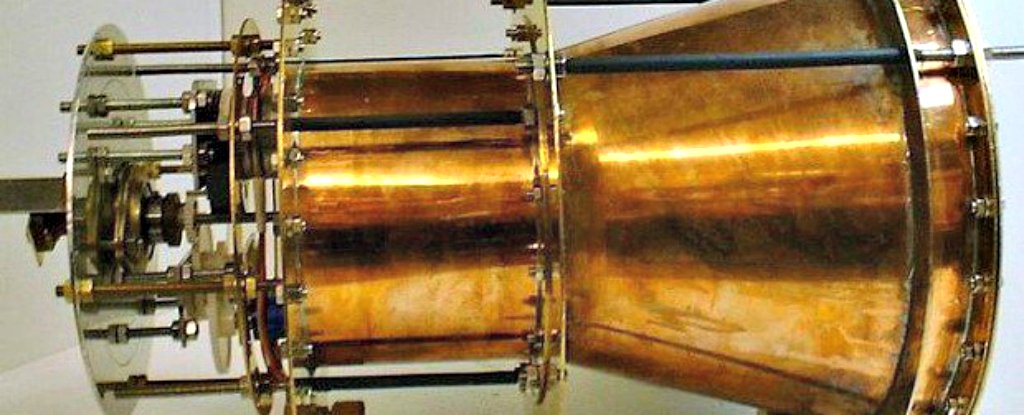Scientists Think They Can Finally Explain the Weirdness That Is the 'Alien Megastructure' Star
All 2.3 Million Species Are Mapped into a Single Circle of Life

'Star in a Jar' Fusion Reactor Works and Promises Infinite Energy
Voyager 2 may have been hacked as it entered deep space
a team from the University of Illinois says we’ve been looking at the problem all wrong, and a different perspective could give us a pretty solid answer to KIC 8462852’s weirdness.
The researchers have been studying how the star's large and small dips in brightness relate to each other, and when they applied a number of mathematical models to the data, they came up with patterns that also appear in what's known as avalanche statistics.
Avalanche statistics have turned up in all kinds of natural phenomena, including solar flares, gamma-ray bursts, and neural activity in the brain, and while the maths is pretty complicated, in basic terms, it reveals patterns where small dips in the data occurring between the larger dips ultimately equate to even larger dips.
Avalanche statistics appear to be associated with things going through certain phase transitions - most commonly between solid, liquid, and gaseous states of matter, and in rare cases, plasma...
... "In other words, this could just be a star that's intensely active in some poorly understood way, giving off periodic massive outbursts that cause a dimming of the light. And the fact that stars like this are rare is what's been fooling us all along."
The researchers have been studying how the star's large and small dips in brightness relate to each other, and when they applied a number of mathematical models to the data, they came up with patterns that also appear in what's known as avalanche statistics.
Avalanche statistics have turned up in all kinds of natural phenomena, including solar flares, gamma-ray bursts, and neural activity in the brain, and while the maths is pretty complicated, in basic terms, it reveals patterns where small dips in the data occurring between the larger dips ultimately equate to even larger dips.
Avalanche statistics appear to be associated with things going through certain phase transitions - most commonly between solid, liquid, and gaseous states of matter, and in rare cases, plasma...
... "In other words, this could just be a star that's intensely active in some poorly understood way, giving off periodic massive outbursts that cause a dimming of the light. And the fact that stars like this are rare is what's been fooling us all along."
All 2.3 Million Species Are Mapped into a Single Circle of Life
The lines inside the circle represent all 2.3 million species that have been named. Biologists have genetic sequences for only about 5 percent of them, however; as more are finished, the relationships within and across groups of species may change. Experts estimate that up to 8.7 million species may inhabit the planet (about 15,000 are discovered every year). “We expect the circle to broaden,” says Karen Cranston, a computational evolutionary biologist at Duke University.

'Star in a Jar' Fusion Reactor Works and Promises Infinite Energy
In a study published in the latest edition of the journal Nature Communications, researchers confirmed that Germany's Wendelstein 7-X (W7-X) fusion energy device is on track and working as planned. The space-age system, known as a stellerator, generated its first batch of hydrogen plasma when it was first fired up earlier this year. The new tests basically give scientists the green light to proceed to the next stage of the process.
Voyager 2 may have been hacked as it entered deep space
Later results revealed that a single digit in the binary code of command system on Voyager 2; ‘0’ was flipped to a ‘1’. Flipping of one bit of data suggest that some unknown party intentionally interfered with Voyager 2’s on-board computers.
Binary bit flipping is trick used by several hackers. Bit flipping can actually shut down a computer or even corrupt data. Investigators started to look for the source of possible hack and they first looked at Earth. But as the distance is involved so this makes it highly unlikely. As we all know that Voyager 2 is carrying a message by humanity into space. The message encoded abroad Voyager 2 is for intelligent civilizations it may encounter. So could bit flipping be a response to our message?
Some researchers say that bit flipping could be an obvious response by Aliens. After 3 weeks of this anomaly researcher were successful in restoring the communication system. But who or what caused the anomaly is still a question. The exact cause of bit flipping still stays unknown.
Binary bit flipping is trick used by several hackers. Bit flipping can actually shut down a computer or even corrupt data. Investigators started to look for the source of possible hack and they first looked at Earth. But as the distance is involved so this makes it highly unlikely. As we all know that Voyager 2 is carrying a message by humanity into space. The message encoded abroad Voyager 2 is for intelligent civilizations it may encounter. So could bit flipping be a response to our message?
Some researchers say that bit flipping could be an obvious response by Aliens. After 3 weeks of this anomaly researcher were successful in restoring the communication system. But who or what caused the anomaly is still a question. The exact cause of bit flipping still stays unknown.


Comment